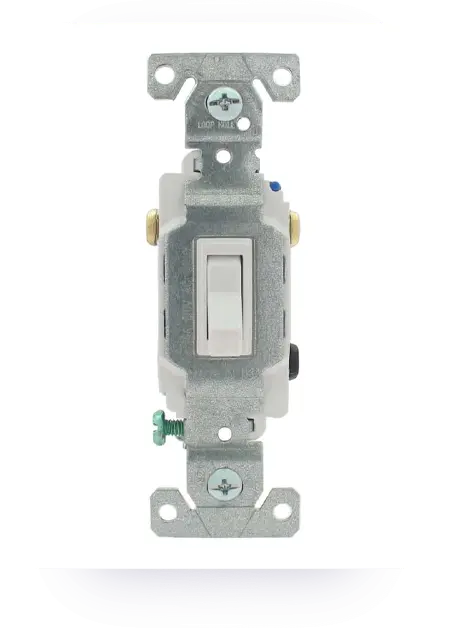
How to 
Wire a 3-way Switch
 Basic Concepts
Basic Concepts 
In the next section, we’ll walk you through a step-by-step guide on wiring a 3-way switch. Stay tuned to turn on your DIY skills, safely and effectively!
 Step-By-Step Guide To Wiring
Step-By-Step Guide To Wiring 
A 3-Way Switch
 Preparation & Safety Checks
Preparation & Safety Checks 
 Understanding Wiring Diagrams
Understanding Wiring Diagrams 
Familiarize yourself with the wiring diagram for a 3-way switch. A standard 3-way switch circuit involves two switches and one light fixture. Each switch has three terminals: one “common” terminal and two “traveler” terminals. The common terminal will be connected to either the power source (in the first switch) or the light fixture (in the second switch), while the traveler terminals will be connected to each other through
traveler wires.
 Disconnecting The Old Switch
Disconnecting The Old Switch 
 Connecting The New 3-Way Switch
Connecting The New 3-Way Switch 
 Testing The Connection
Testing The Connection 
 Troubleshooting Common Issues
Troubleshooting Common Issues 
- Switch Doesn’t Control the Light: If the switches don’t control the light at all, check the connections to the common terminal. The common wire may be connected to a traveler terminal instead.
- One Switch Works, the Other Doesn’t: This problem usually indicates an issue with the traveler wires. Ensure that the traveler wires are connected properly to the corresponding traveler terminals on both switches.
- Light Flickering or Unstable: Flickering can be caused by loose connections. Tighten all wire nuts and connections. If the problem persists, the issue might be with the light fixture itself or the wiring in the walls.
- Circuit Breaker Tripping: This is a serious issue that suggests a short circuit. Immediately turn off power and inspect the wiring for any stripped wires touching each other or the metal switch box. If you can’t find the cause, a licensed electrician should be called to diagnose and fix the issue.
Remember, electricity is dangerous, and incorrect wiring can lead to fires or electrical shocks. When in doubt, always seek professional help from a licensed electrician to ensure your safety and the safety of your home.
 Conclusion
Conclusion 
 FAQs
FAQs 
A 3-way switch allows you to control a single light or a group of lights from two different locations, whereas a standard switch controls the lights from one location.
Basic electrical tools such as wire strippers, a screwdriver, and a voltage tester are sufficient. However, having a diagram and understanding the wiring layout is crucial.





